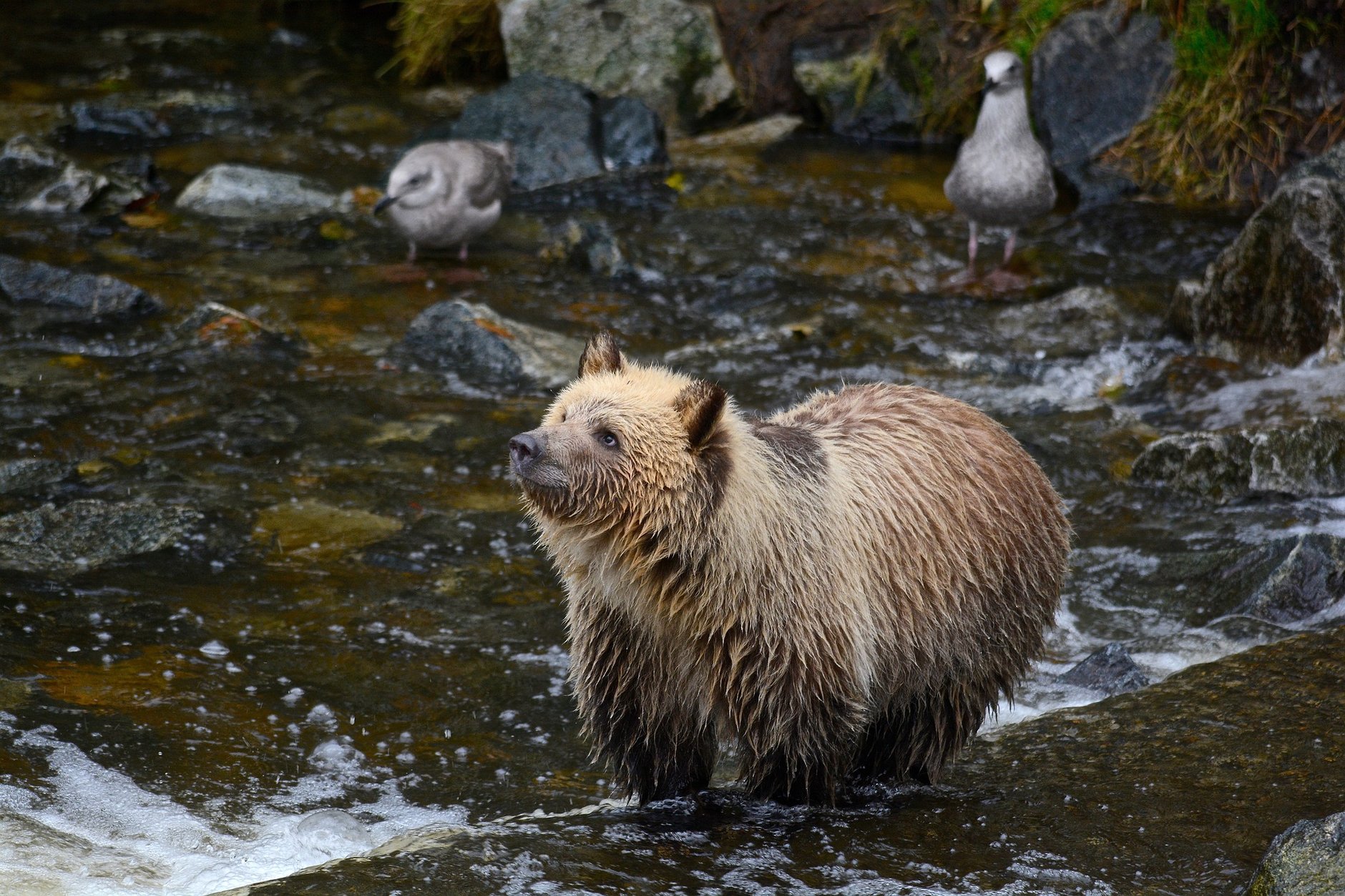(CN) — Montana must limit wolf trapping and snaring in habitats used by federally protected grizzly bears to only January and February when all the bears are presumed to be in their dens hibernating, per a court order issued Tuesday.
U.S. District Judge Donald Molloy in Missoula issued a preliminary injunction Tuesday at the request of two conservation groups who argued that the state's plan to allow wolf trapping as early as the first Monday after Thanksgiving, and continuing through March 15, can cause harm to the bears in violation of the U.S. Endangered Species Act.
"Because the substantial body of evidence plaintiffs present leads to the logical conclusion that future takes of grizzly bears in legal wolf and coyote traps are reasonably certain under the state's current regulatory scheme, plaintiffs have shown irreparable harm sufficient for a preliminary injunction," Molloy said.
The judge didn't extend his decision to coyote trapping because, even though there was also a risk of injuries, or "take," to grizzly bears from coyote traps, the lawsuit focused on the Montana Fish and Wildlife Commission's decision in August to extend wolf trapping season in the state and not on the different set of regulations covering coyote trapping.
An attorney for the Montana Department of Fish, Wildlife and Parks, the defendant in the lawsuit, didn't immediately respond to a request for comment Tuesday evening.
The Flathead-Lolo-Bitterroot Citizen Task Force and WildEarth Guardians argued their case against the state wildlife regulator before Molloy on Monday.
They claimed that the state agency is violating the Endangered Species Act by allowing such trapping and snaring in some grizzly bear habitat at a time of year when the bears are still outside their hibernation dens and at risk of being accidentally caught, constituting illegal "take" under the Endangered Species Act.
Capturing the bears is legal only when the U.S. Fish and Wildlife Service has issued a take permit. Montana Fish, Wildlife and Parks has not applied for such a permit for recreational trapping, the organizations say.
“The regulations that are in place are reasonably certain to lead to a grizzly bear stepping into a trap somewhere. So the benefit of the doubt has to go to the listed species,” Tim Bechtold, an attorney for the conservation groups said. “Because it’s likely that grizzly bears will be out of their dens in December and in March, it’s likely that they’ll be on lands outside of the occupied zone, and it’s reasonably likely that they’ll be exposed to traps.”
Starting in 2021, the Montana Legislature passed several bills to allow more hunting and trapping methods in an effort to kill more wolves. That’s when snares were first allowed in Montana, along with baiting and a longer season. However, when it came to implementing the laws, the state agency knew it couldn’t allow some activities where threatened grizzly bears and lynx were known to be.
In 2022, Fish, Wildlife and Parks designated much of Western Montana as an area where the trapping start date could be delayed, depending on whether or not grizzly bears were in their dens as determined by area biologists. The statewide season would start in late November and go until mid-March, but in Western Montana where grizzly bear populations are recovering, the start date could be slid back to Dec. 31, depending on what bears were doing.
This year, grizzly bears are still active, due to a slow-coming winter in Montana, which saw the warmest September on record and is experiencing a warm, dry November.
In August 2023, the wildlife commission approved a regulation change that shrank the area with the floating start date, eliminating a large swath of land between the north and south populations, among other reductions.
During the past few years, grizzlies have been newly documented in those excluded areas of land as they slowly expand into other parts of the state. Recently, a grizzly was photographed near the Upper Missouri Breaks National Monument, hundreds of miles east of the nearest official occupied area. The organization argues that the new regulation increases the risk of trapping a bear.
However, state attorney Rachel Clerget argued that biologists redid the map in February 2023 using a different methodology to determine with more certainty where bears would be. So while the area was smaller, the new map shows areas where the likelihood of finding a bear has increased 11%, Clerget said.
“The certainty is about place,” Clerget said. “The data of incidental take shows that the only place you’re reasonably certain to find a bear is in those occupied places. The case here has to be based on reasonable certainty.”
Clerget also argued the question of immediacy, saying that Molloy shouldn’t grant an injunction now, because the plaintiffs haven’t sued for one before, even though the state has allowed some wolf trapping since 2013 and some grizzlies were caught in traps in 2013 and 2014.
But Bechtold said the case was justified by new evidence that only came to light in August 2022, including evidence of trapping “take” that wasn't limited to killing grizzly bears.
University of British Columbia researcher Clayton Lamb published a peer-reviewed article documenting several grizzly bears captured between 2016 and 2020 had lost toes to traps, particularly the body-gripping Conibear traps. Lamb noted the toe loss may have influenced conflict behavior, because three of four individuals with amputated toes were later involved in human-bear conflicts.
Subscribe to Closing Arguments
Sign up for new weekly newsletter Closing Arguments to get the latest about ongoing trials, major litigation and hot cases and rulings in courthouses around the U.S. and the world.









